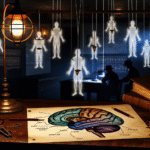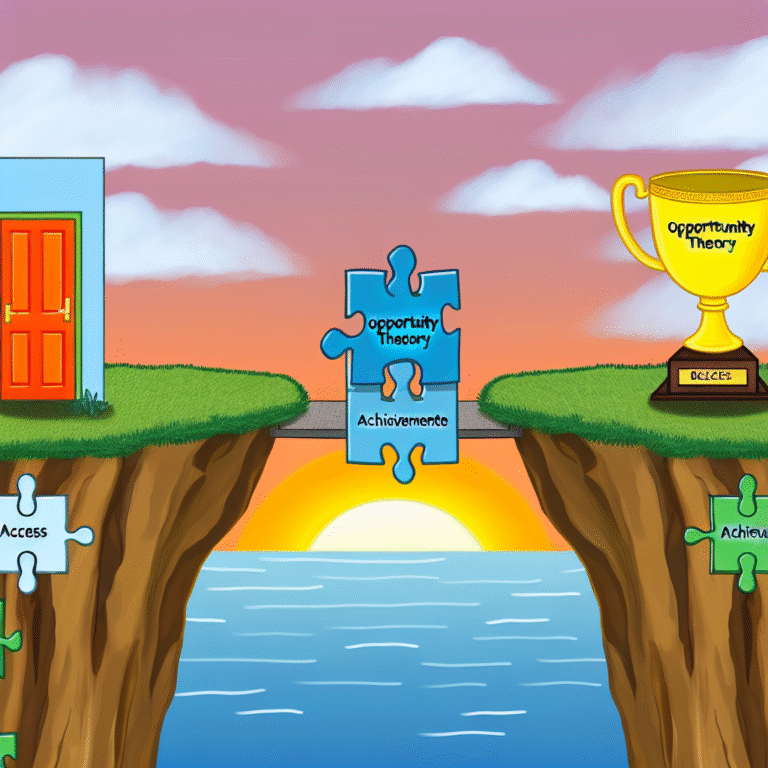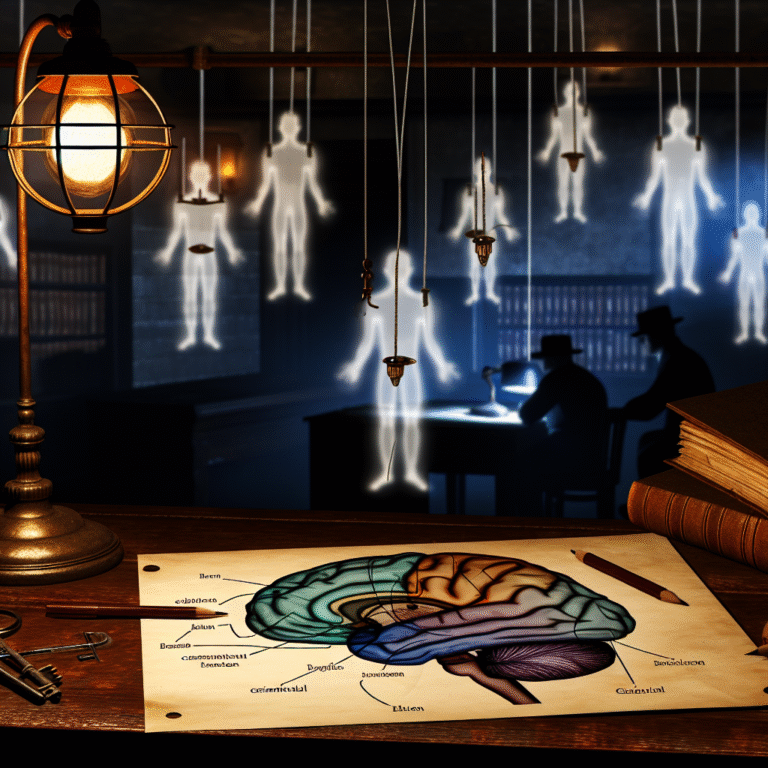
Introduction
Imagine a world where crime is influenced not by necessity or desperation, but by the allure of the silver screen. Movies and television shows have an undeniable impact on our perceptions, beliefs, and, intriguingly, our behavior. The phenomenon of how dramatic representations of crime onscreen translate into real-life actions is a complex narrative worth exploring. This article delves deep into the enchanting yet troubling subject of From Fiction to Reality: The Role of Movies and TV in Shaping Criminal Behavior, revealing insights that are not only thought-provoking but essential.
Through detailed case studies and analysis, we aim to uncover the multilayered influence of cinematic narratives on criminal behavior and social norms. Let’s embark on this journey together, aiming to illustrate how fiction often bleeds into reality.
The Psychological Connection: Why Do We Relate to Crime on Screen?
The Power of Narrative
At the heart of our understanding of crime in film and television is the narrative structure. Stories compel us; they engage our empathy and sometimes lead us down dark paths in our minds. The age-old saying, "truth is stranger than fiction," attempts to capture our fascination with crime, but more so, it hints at our innate curiosity.
Key Insight:
Movies and TV shows often present crime not just as a plot device but as an avenue for exploring deeper human emotions. From a psychological standpoint, audiences are intrigued by the motivations behind characters’ actions, often mirroring real-world conflicts and dilemmas.
Movies as a Reflection of Society
Films often serve as cultural mirrors, reflecting societal norms, fears, and values. The portrayal of crime can either escalate existing fears or redefine societal attitudes toward criminality.
- Table 1: Influence of Movies on Perceived Crime Rates
| Movie Title | Year | Crime Portrayed | Actual Crime Rate Impact (Following Year) |
|---|---|---|---|
| "The Godfather" | 1972 | Organized crime | Spike in Mafia-related crimes |
| "Natural Born Killers" | 1994 | Serial killers | Increase in violent crime incidents |
| "Training Day" | 2001 | Police corruption | Distrust toward police in urban areas |
The Imitation Factor: A Theory Explored
One of the most studied psychological phenomena related to media influence on behavior is the "imitation factor," positing that audiences can mimic actions seen in films and TV shows. Does this mean they lack personal agency? Not necessarily; rather, it indicates a subliminal influence—people may start to normalize behaviors deemed acceptable in popular culture.
Case Study: "The Joker" Effect
The 2019 film Joker reignited debates about mental health and societal violence. Critics argued that by humanizing the villain, the film teetered on glorifying criminal behavior. In the wake of its release, the FBI and local law enforcement agencies heightened awareness of potential violence in public places, showcasing the tangible influence of fictional narratives on real-world safety.
Analysis:
This case highlights the power of character-driven narratives and the direct consequences they can have, further affirming the discussions surrounding From Fiction to Reality: The Role of Movies and TV in Shaping Criminal Behavior.
Social Media: The New Frontier
Viral Trends and Criminality
In today’s age of social media, the dynamics have shifted. Actions previously confined to the realm of fiction can quickly manifest online, influencing behavior worldwide through viral trends.
- Chart 1: Social Media Trends Related to Crime
| Year | Trend | Impact on Criminal Behavior |
|---|---|---|
| 2016 | #FreeTamirRice | Protest against police brutality, but some violent actions observed |
| 2020 | "Choking Challenge" | Initiation of several assault cases among youth |
The instant amplification of these trends showcases how even the most ridiculous or dangerous elements of fiction can seep into reality, prompting discussions concerning the social responsibilities of content creators.
Case Study: The "Ice Bucket Challenge" Turned Violent
The Ice Bucket Challenge, initially a viral phenomenon aimed at raising awareness for ALS, took an unexpected turn when individuals began adding elements that resulted in dangerous stunts, inspired by similar challenge-based trends in movies and television. Reports of injuries and even fatalities followed, leading many to question the limits of influencer responsibility.
Analysis:
What was initially a benign charitable act morphed into a reckless pursuit of online fame, highlighting alarming parallels between online behaviors and fictional depictions of reckless abandon.
The Generation Gap: How Different Age Groups Respond to Crime in Media
Children and Young Adults
Young children are particularly susceptible to media influence. From cartoons with slapstick crime to more serious content in films, children may view these representations as acceptable. The American Psychological Association released a report detailing the effects of violent media on younger viewers, which concluded that frequent exposure could lead to desensitization.
Older Audiences
Conversely, older viewers may be more critical when it comes to media representations of crime. Their experiences often guide their perceptions, allowing them to dissect and critique the dramatizations, perhaps seeing them as cautionary tales rather than templates for behavior.
- Table 2: Age Distribution and Perceptions of Crime in Media
| Age Group | Percentage Impacted by Media | Commonly Preferred Genre |
|---|---|---|
| Under 18 | 65% | Action/Adventure |
| 18-35 | 75% | Thriller/Drama |
| 35+ | 50% | Documentaries/Crime Analysis |
Case Study: "Breaking Bad" Phenomenon
The television series Breaking Bad demonstrated a unique generational divide. Younger viewers often idolized the character Walter White, while older audiences critiqued his choices as morally bankrupt. This disparity highlights the reflective nature of crime in media and its generational resonance.
Analysis:
While younger audiences might celebrate the anti-hero narrative, older viewers often recognize the ethical pitfalls, showcasing From Fiction to Reality: The Role of Movies and TV in Shaping Criminal Behavior across demographics.
Consequences: Legal Implications and Societal Responsibility
The Legal Landscape
The relationship between fictional crime and real-world consequences is convoluted. While media is often protected under free speech rights, ethical dilemmas arise when depictions of violence incite real-world criminal acts.
Case Study: "American Psycho"
American Psycho, both novel and film, sparked debates regarding the glamorization of violent behavior. Courts took note when individuals began to replicate the crimes depicted. Legal systems face the challenge of balancing artistic expression against public safety.
Analysis:
This case presents a crucial point of discussion; creators bear a societal responsibility for their content, as their storytelling could ultimately influence audience behaviors.
Conclusion
In summary, the intricate relationship between fictional portrayals of crime and real-life behaviors poses essential inquiries about the power of narrative. Movies and television wield significant influence over societal behaviors, beliefs, and trends, making the exploration of From Fiction to Reality: The Role of Movies and TV in Shaping Criminal Behavior not only relevant but critical.
As we navigate this complex landscape, awareness and responsibility—both from creators and consumers—will be paramount. Understanding the potential ramifications of the media we consume can empower us to make informed choices, ultimately guiding society towards healthier representations and behaviors.
FAQs Section
How do movies and TV shows influence real-world criminal behavior?
- They shape perceptions, normalize behaviors, and can lead to imitation, especially among impressionable audiences.
Are all genres of films equally influential in shaping criminality?
- Generally, crime dramas and thrillers have the most significant impact, while comedies may provide less of a direct correlation.
What steps can creators take to mitigate the influence of crime in media?
- They can portray ethical dilemmas, highlight consequences, and provide context that discourages glorifying criminal behavior.
Is there a direct correlation between fictional crime and rising real-life crime rates?
- While correlation exists, it’s multifaceted and involves many societal factors. Specific trends can lead to increases in particular types of real-world crime.
- How can audiences engage critically with crime portrayed in media?
- Viewers should question narratives, discuss moral implications, and seek diverse viewpoints to develop a nuanced understanding.
By fostering discussions around the influences of media, society can navigate toward a more responsible consumption of content. Acknowledging the role of films and television in shaping perceptions can lead to informed choices, making us better consumers and critics of mass media.















